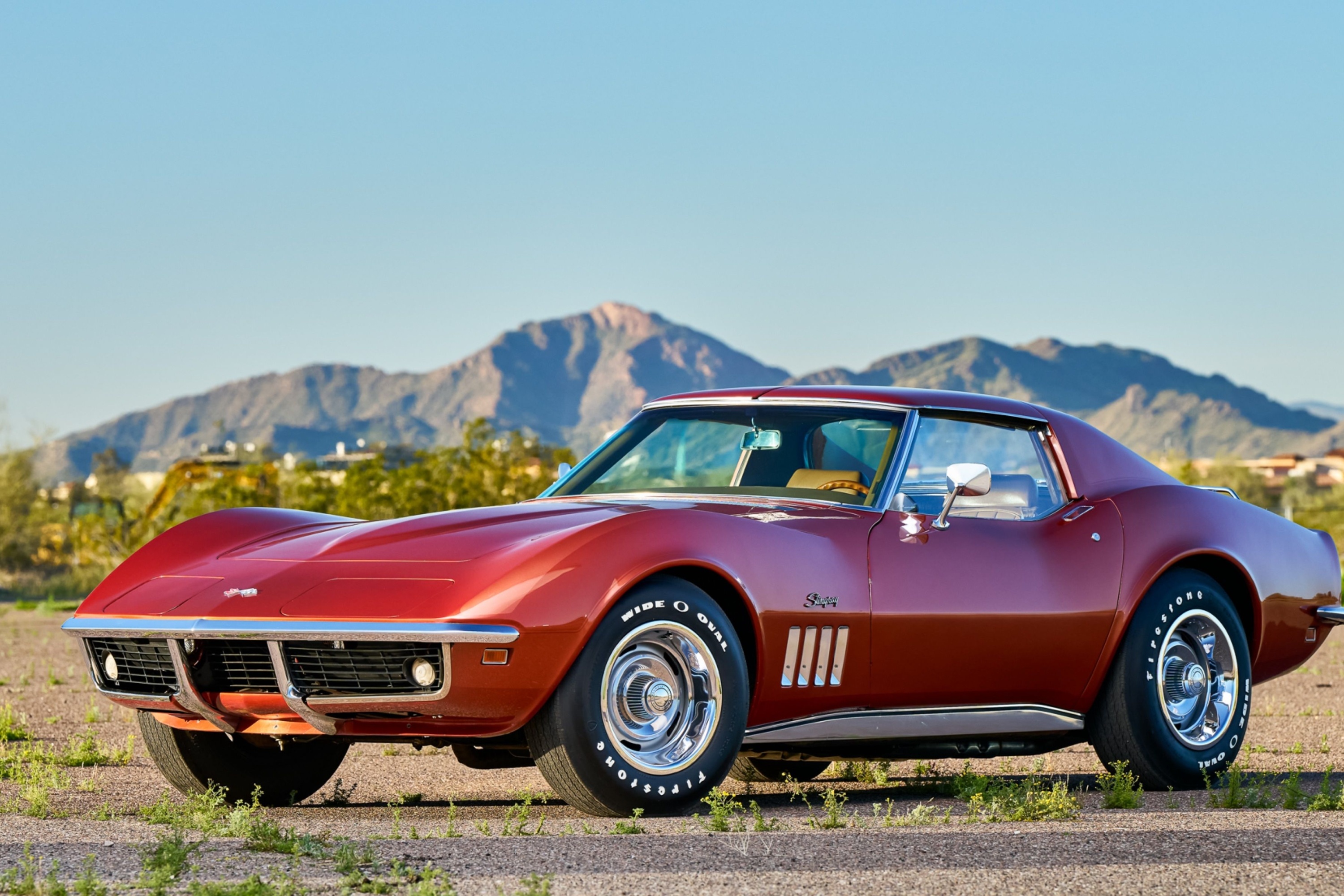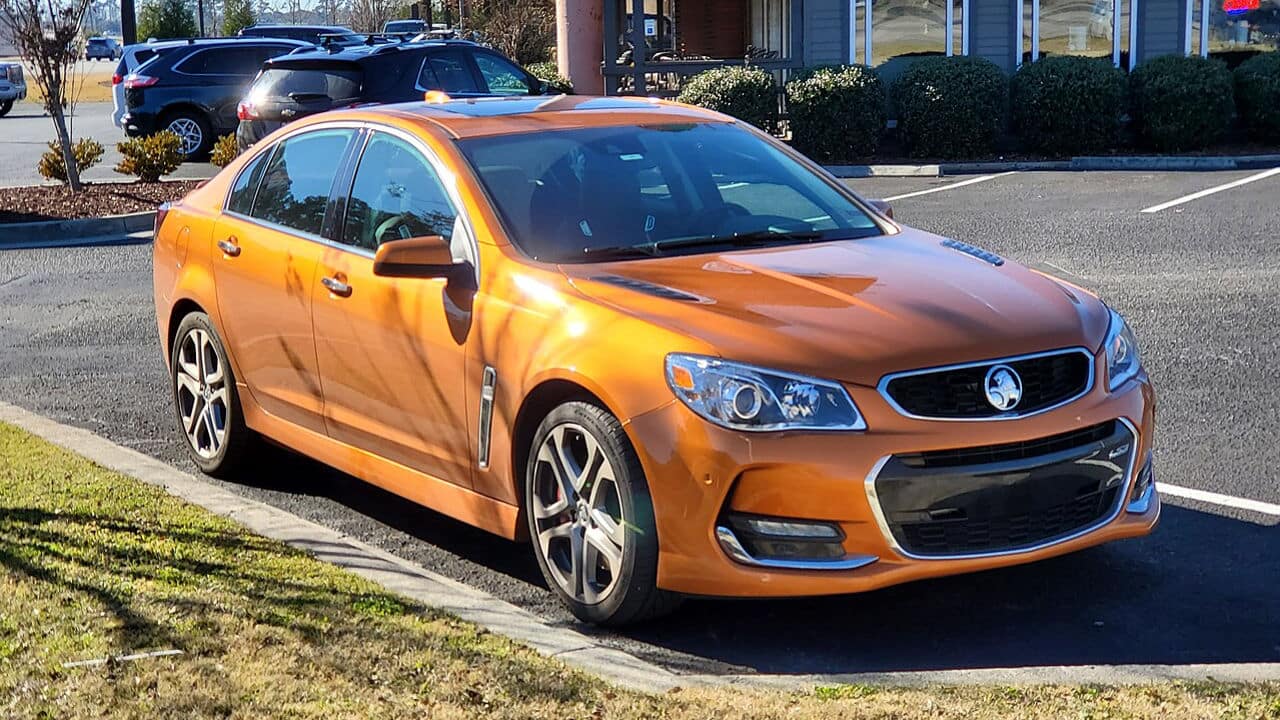
VINTAGE CHEVY CORVETTE BUYER’S GUIDE: EVERYTHING YOU NEED TO KNOW
When it debuted in 1953 to compete with the Ford Thunderbird, Chevrolet’s Corvette was anything but an instant success. The two-seat sports car had good looks but paled compared to the stunning mid-1950s T-Birds. However, General Motors paid attention to what customers wanted and polished its newfound diamond in the rough to become not only one of the best-selling two-seaters in history but also the longest-running domestic badge in the United States.
Today, we are eight generations into Chevy’s halo car. Each generation is simply designated with a C (for Corvette) and then the number that corresponds to that year’s particular generation. Depending on what era you grew up in or what model you happened to be exposed to as an impressionable young car enthusiast, opinions on which generation Corvette is the best is as subjective as asking what your favorite flavor of ice cream is. But like any good sugar cone, waffle cone, or sundae, each iteration of the Corvette is deliciously decadent in its own way.
The following is a breakdown of each of the first five versions of the Chevy Corvette and what to look for when finally trying to buy your dream car. Enjoy!
What is a C1 Corvette?
The first generation Corvette lasted from its debut in 1953 to 1962. Along the way, Chevy made some significant changes to the ‘Vette. While it began life with a Blue Flame inline six-cylinder engine, Chevy management quickly realized that 150 hp wasn’t going to cut it despite the Corvette’s relatively light fiberglass body and topless configuration.
So, in 1955, they introduced a 265 CID V-8 to the mix, which then grew to 283 CID by 1957. This was also the first year mechanical fuel injection was added to the mix, upping the Vette’s power peak by nearly 100 ponies to 245 hp. Power would peak in the C1’s final year, 1962, with a 327 CID engine that made an impressive (and pre-emissions 360 hp).
1961 introduced the Corvette’s signature quad-tailight design, which continues to this day with the C8. The C1 also marks the last time we saw exposed headlamps on a Corvette until they were resurrected for the C6 in 2005.
C1 Corvette buying tips
- As with any used car, we strongly recommend getting the opinion of a professional mechanic (or three) before making any major decisions. The following are the major potential issues to watch out for when buying a first-gen Vette.
- Although fiberglass ages far better than steel, it can still pit and crack over time.
- The bonding strips that hold those panels together can also deteriorate. Be sure not to gloss over what may appear to be a great-looking car from fifty feet out.
- But while the Corvette’s skin won’t rust, everything under it can. Remember to take a good look at all the drivetrain and suspension parts, which understandably may have rusted over the last sixty-plus years.
What is a C2 Corvette?
The second generation of Corvette began in 1963 and ended in 1967. Although it was the briefest generation of Corvette, the C2 made a lasting impact on the autoverse. The C2 introduced the Corvette world to its first independent rear suspension and disc brakes. The inaugural 1963 hardtop was the famous ‘Split Window Coupe.’ Due to being highly impractical for rearward visibility, the split was eliminated a year later, making the 1963 sought after for collectibility reasons.
The 1966 and 1967 cars are especially collectible because they offer the (now) legendary 427 cubic-inch V-8. The pinnacle of the C2 is unquestionably the incredible L88, which was an all-aluminum 427 that made an underrated 430 hp.
C2 Corvette buying tips
- Just like the C1, the C2’s fiberglass body can suffer the same stress cracks and body panel bonding strip issues.
- Known as the “birdcage,” the coupe versions of the C2 used a steel frame support system for the roof and pillars. These should be inspected for rust, especially at the lower corners of the windshield, where water can sit.
- The main frame rails, rear trailing arms, and control arms of these cars also tend to be trouble spots due to rust and corrosion over the years.
- The Powerglide automatic transmission can be prone to leaks.
- The rear gears and wheel bearings can become worn down with enough time and miles on them.
What is a C3 Corvette?
The third generation Corvette came along in 1968 and lasted all the way until 1982. The C3 and its Coke bottle shape also introduced T-tops to the mix. The largest engine block ever found in a Corvette was the 454 cubic-inch beast that appeared on the option list from 1970 to 1974.
Although categorized into one entire generation, purists will delineate between the early 1968-1972 models, which were the last of big block ‘Vettes and high horsepower numbers before a combination of new emissions laws and moving from gross to net ratings cut down horsepower numbers to record lows, along with every other car in the mid-1970s.
C3 Corvette buying tips
- Although cool, the T-top seals can leak over time
- The Quadrajet carburetor on early cars can tend to be finicky
- Later models used quirky Crossfire injection systems which, much like trying to use old tech, can prove difficult to find parts for and repair.
- Vacuum lines operate the headlamps and cowl, which can deteriorate and cause problems at the most inopportune times.
- Just as in the C2, the “birdcage” can be prone to rusting around the window frames.
What is a C4 Corvette?
Beginning in 1984 and lasting until 1996, the revolutionary C4 Corvette was delayed a year due to production issues, so if anyone tries to sell you an ’83 Corvette, they may also have a bridge in Brooklyn to pawn as well.
Beginning in 1990, the C4 stepped up its game. Not only did the ‘Vette get a much-needed facelift, but Chevy also introduced us to the ZR-1, which made the Corvette a bonafide supercar (for its day) able to compete with the best Italy, Germany, or Japan had to offer.
1992 also introduced us to the first true modern small block Chevy V-8 in the form of the LT1. An even more potent variant, the LT4, made a cameo for just 1996 under the hood of the vivacious Grand Sport.
C4 Corvette buying tips
- Though it transitioned from T-tops to a Targa, the C4’s roof is also prone to leaks if it hasn’t been taken care of.
- The weatherstripping all around the C4 seems to universally not have aged well and tends to be problematic.
- The pre-1990 digital dashboard has a propensity to fail more than later years.
- The early Crossfire injections crossed over from C3, and in later years, the Tuned-Port fuel injection system can both prove difficult to tune properly.
- While the LT1 was a stout and reliable engine, its Opti-Spark ignition system is its lone weak point. Watch for misfires, hesitations, backfiring and clunky power delivery.
What is a C5 Corvette?
To some, yours truly included, it may seem ludicrous that the C5 can now be thought of as a classic. But having first rolled off the assembly line in 1997 (and ended in 2004), the first few years of the fifth gen Corvette officially qualify for classic auto insurance.
In an effort to do away with its predecessors’ penchant for feeling somewhat unstable at speed (especially the convertibles), the C5 was built with rigidity in mind and built as a drop-top first and then a coupe, which made it the most stable Vette to date.
The 1999 fixed-roof coupe was a one-year wonder but lacked the pure race-bred nature speed freaks hoped for. But that body style paved the way for the introduction of the mighty C5 Z06 in 2001. Beginning with 385 hp, the Z topped out at an impressive 405 hp and once again, allowed the Corvette to compete on the highest levels of performance.
C5 Corvette buying tips
- While the LS1 (and later LS6) were essentially bulletproof, a small percentage of them suffered from what is known as ‘piston slap.’ Upon cold start-up, piston slap is caused by a larger-than-ideal piston-to-wall clearance, allowing the piston to knock against the cylinder walls. Once the engine oil is warm, this noise tends to go away, but it can be irritating for perfectionist owners.
- The gear that operates the pop-up headlights is plastic and can grind itself to dust over time.
- Like its predecessors, weatherstripping and seals (especially on the convertible) can crack and cause leaks.
- The antitheft system can lock out its own keys. This can be caused by a key that has been ground down to a point where it cannot always be recognized by the car or a loose ignition cylinder.
- Keep an eye on the Check Engine light. This can indicate any number of problems that only a code reader can decipher. The light can be illuminated for one code or ten, so even if the seller thinks they know what the issue is, there may be more problems than they are aware of.
The post Vintage Chevy Corvette buyer’s guide: Everything you need to know appeared first on The Manual.
2024-07-07T15:33:53Z dg43tfdfdgfd
